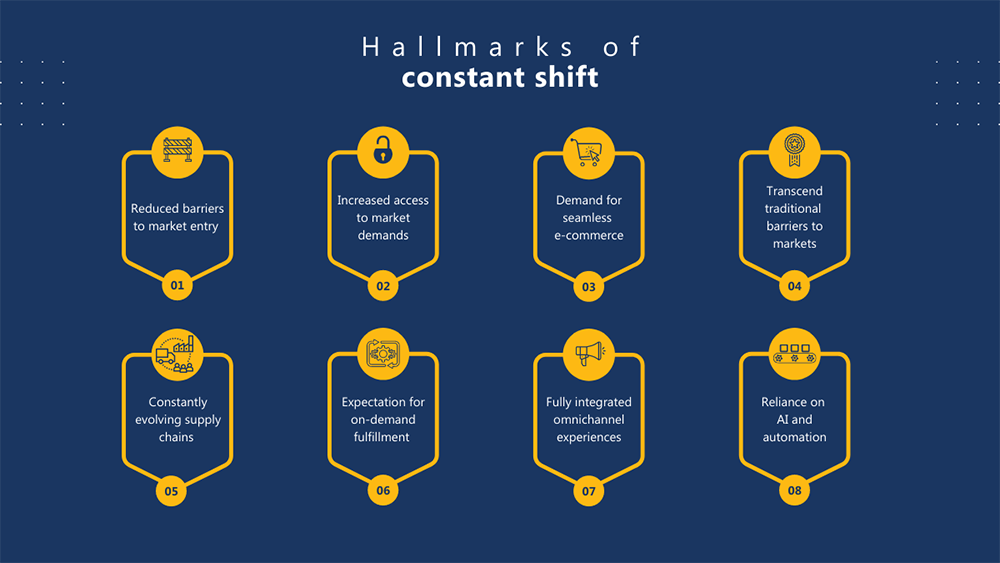Retailers face an exponential amount of change and will continue to do so for the foreseeable future. The Big Shift is a term often recycled and repurposed to fit any innovations or changes in the retail industry. Originally it was coined to refer to economic transformation caused by exponential improvements to the cost and performance of digital infrastructure, alongside the liberalization of public policy—leading to constant disruption and shifts in the balance of power between businesses and their customers.
The Big Shift effectively means that companies face the pressure of increased competition, and consumers gain the advantages of knowledge sharing and transparency. It points to a democratization of the retail landscape, robbing retail giants of market ubiquity and creating niches within markets.
Just as technological advancements have come under this label, so have responses to the climate crisis and customer care. Anything which disrupts business-as-usual is part of The Big Shift, and so in many ways, the term has lost all sense of real meaning.
One of the issues is that the phrase is singular, allowing brands to think of evolving circumstances as a fixed or distinct shift, i.e., a mindset that implies we’ve done The Big Shift once X is complete. Used accurately, it refers to the constant shifting which shapes the retail climate.

To prepare teams for the constant transformation needed to keep pace in a rapidly changing world, leaders need terminology to match the state of doing business. Brands must build robust processes and automation that will allow them to make the strategic pivots that expansion requires. Surviving, and thriving, falls to those brands that embrace the constant shift and engage in ongoing retail transformation.
Read our blog to learn more about how retail transformation can help you build a backbone for future expansions and download our whitepaper to learn more about how it connects to the constant shift.
